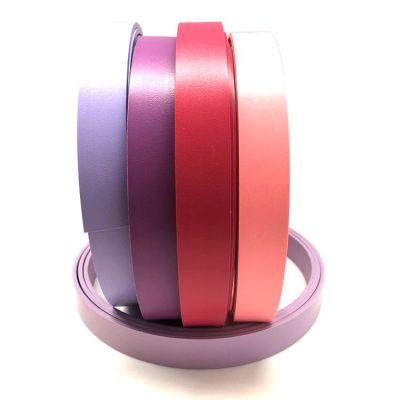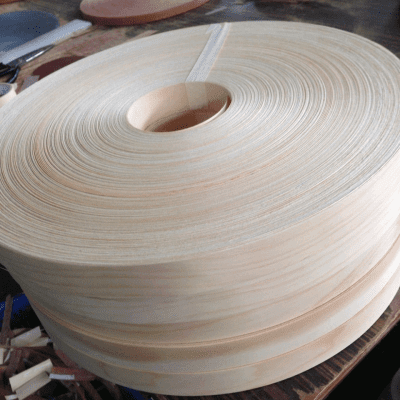The choice between ABS (Acrylonitrile Butadiene Styrene) and veneer edging depends on various factors, including the specific requirements of your project, your design preferences, and the desired characteristics of the edge banding material. Both ABS and veneer edging have their advantages and considerations, so it’s essential to evaluate the following aspects to determine which may be better suited for your application:
ABS Edge Banding:
- Durability:
- ABS is known for its durability and impact resistance. It provides a tough outer layer that can withstand daily wear and tear, making it suitable for high-traffic areas and applications where resilience is essential.
- Moisture Resistance:
- ABS is generally resistant to moisture, making it suitable for use in environments where exposure to water or humidity is a concern. This resistance helps prevent swelling or warping of the edge banding.
- Consistency and Uniformity:
- ABS edge banding is manufactured to be consistent in color and pattern. This uniformity can be advantageous for achieving a cohesive and modern look in projects.
- Versatility:
- ABS edge banding is available in a wide range of colors and patterns, offering versatility in design. It can mimic the appearance of various materials, including wood grains and solid colors.
- Easy Maintenance:
- ABS is easy to clean and maintain, which is beneficial for applications in kitchens, bathrooms, and other areas prone to spills or splashes.
Veneer Edge Banding:
- Natural Appearance:
- Veneer edge banding provides a natural wood appearance, offering the warmth and authenticity of real wood. It can be an excellent choice for projects where a genuine wood look is desired.
- Variety of Wood Species:
- Veneer edge banding is available in a variety of wood species, allowing you to match or complement the underlying plywood or MDF. This variety makes it easier to achieve specific design aesthetics.
- Sandable and Stainable:
- Veneer edge banding can be sanded and stained, providing the ability to customize the appearance and match the color of the veneer to the overall project.
- Environmentally Friendly Options:
- Some veneer edge banding products are made from sustainable or FSC-certified wood sources, offering environmentally friendly options for those with sustainability considerations.
- Natural Texture:
- Veneer edge banding often retains the natural texture and grain of the wood, providing a tactile and visually appealing finish.

- Veneer edge banding often retains the natural texture and grain of the wood, providing a tactile and visually appealing finish.
ABS Edge Banding and Veneer Edge Banding considerations for implementation
- Budget:
- ABS edge banding is often more cost-effective than real wood veneer, making it a practical choice for projects with budget constraints.
- Application and Style:
- Consider the overall style and application of your project. ABS may be preferred for modern and contemporary designs, while veneer may be chosen for traditional or natural aesthetics.
- Matching Existing Woodwork:
- If your project involves matching existing woodwork or furniture, veneer edge banding may be a better choice for achieving a seamless match.
In summary, both ABS and veneer edge banding have their strengths, and the choice between them depends on your specific project requirements and design preferences. Assess factors such as durability, appearance, maintenance needs, and budget to make an informed decision.

